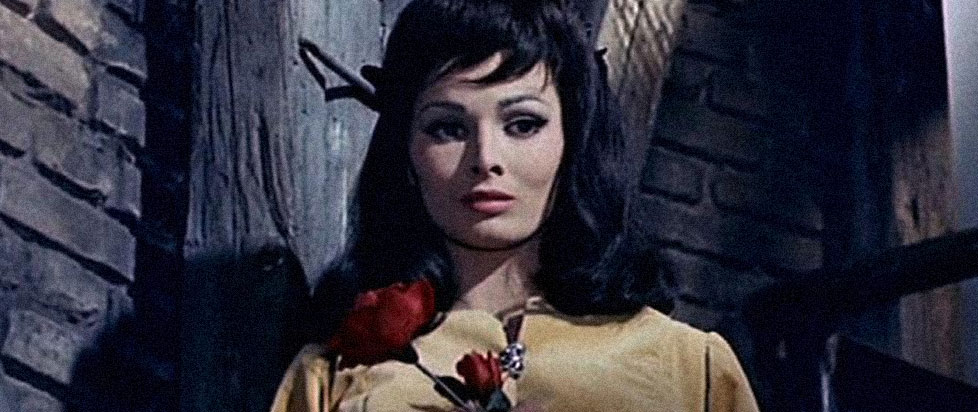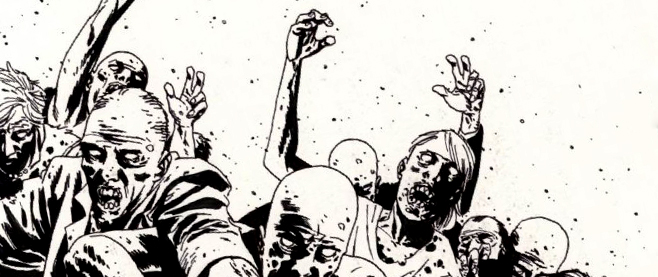
A Dangerous Dream: Revisiting Mill of the Stone Women (1960) on Blu-ray
“Trouble began with a woman…”
For the past couple of years, I’ve taken to keeping a running Twitter thread of new-to-me movies I loved that I saw for the first time that year, regardless of when they were released. Since I’ve been doing it, one of my personal favorite discoveries has been Giorgio Ferroni’s Mill of the Stone Women, which I first watched on a grainy YouTube rip, later picked up on a cheapskate DVD, and finally, now, saw in a glorious 2K restoration courtesy of Arrow Video.
Mill of the Stone Women boasts an array of historic contexts that make it ripe for this kind of special edition treatment – and Arrow went all-out on it, filling the discs with not one, not two, not three, but four different cuts of the film, while stuffing the slipcase with a 60-page booklet featuring contemporary reviews and essays by Roberto Curti and Brad Stevens.
Released as part of Italy’s first real foray into gothic horror films, inspired by the success of Hammer’s Horror of Dracula, which made its way to Italian cinemas roughly the year before, Stone Women is a contemporary to such classics of the form as Mario Bava’s Black Sunday – indeed, the two films premiered within weeks of one another. What helps to make Stone Women historic is the fact that it’s also the first Italian horror film to have been shot in color.
In this way, much of what Italian gothic horror is going to look like for the next decade-plus is already present here, alongside notes that help this film to stand out from the flicks to which it would give rise. Much has been made of the resemblances between Stone Women and the French classic Eyes Without a Face, although given that the latter arrived in Italian theaters just months before the former, it seems unlikely that any real inspiration was possible.
Instead, the booklet that accompanies the Arrow Blu posits other possible cinematic fillips, including Carl Theodor Dreyer’s 1932 classic Vampyr, not to mention such obvious forebears as House of Wax and Mystery of the Wax Museum.
While the filmic pedigree of Mill of the Stone Women is fascinating, however, it’s another vein altogether that really makes this one a particular favorite of mine. The opening credits claim that the screenplay was inspired by a Flemish weird tale written by one Pieter van Weige, in a book titled, prosaically enough, Flemish Tales.
The thing is, there’s no such book, and no such author. Rather, the movie was written by a host of names, including Ferroni himself, from a story by Ferroni and Remigio Del Grosso. The ruse of the fictional literary source is one that plenty of other films have put to use over the years, in what the essay in the booklet calls “a somewhat naïve effort to reassure viewers about the quality of the source material.”
Of course, the essay goes on to argue that, “rather than relying on literary models,” Mill of the Stone Women “draws from cinematic ones, in a creative reshaping and merging of diverse influences.” While I won’t argue the cinematic influences, I do think that it’s inaccurate to say that Mill of the Stone Women doesn’t draw from literary influences, as well, even if its specific source material is pure fabrication.
In fact, what drew me to Stone Women the most upon my initial viewing – and what has helped to keep me in love with it on every subsequent watch – is how much it feels like a genuine weird tale from the continent, from about the era in which the film is set. Specifically, while Mill of the Stone Women may not be drawn from a real Flemish tale, it very well could have been adapted from a story by Jean Ray, the so-called “Belgian Poe” and one of my favorite weird authors.
If you haven’t read Ray, his work is an absolute must for fans of the classic weird tale, though much of it has – until recently – been unavailable in English. I first encountered his stories in the doorstop of a genre survey that is The Weird, edited by Ann and Jeff VanderMeer.
Two of Ray’s best tales are included in that volume, and they got me hooked. Luckily for me, a friend in the field, Scott Nicolay, is also a fan of Ray’s weird stories, and has been dutifully translating them and releasing them all in English, often for the first time, through Wakefield Press. (That link takes you to Cruise of Shadows, the second volume in their series, which includes the aforementioned stories and is, in my opinion, a pretty much ideal place to start with Ray’s work.)
Indeed, few movements of film have ever managed to capture – to me, at least – the feel of that almost uniquely European subgenre known as the fantastique, to which our closest Anglophone equivalent is the weird tale, better than these early Italian gothics. And this one is among my favorites for its blend of credible (if not actually true) weird tale atmosphere, exteriors actually filmed in Holland, and the colors and sets of the Hammer gothics that are perhaps my greatest cinematic loves.
I don’t remember what initially made me track down Mill of the Stone Women, though it was probably one of the many gloriously macabre posters that the film enjoys. Once I did, though, I have been waiting impatiently for a decent Blu-ray release ever since. Yet I honestly never dreamed that I would get one this good – in a gorgeous slipcase, loaded with extras, and boasting a handful of different cuts, all of them lovingly restored.
And to say that the film has never looked better is quite the understatement indeed. Ferroni may be no Bava, but this is still a gorgeous, beautifully-lit and photographed, incredibly atmospheric flick that would not be out-of-place in Bava’s oeuvre, or among the best of Hammer’s chillers.
The sequences with the carillon of figures of women martyrs which give the film its name are as unsettling and ominous as anything you could ask for from a film of a macabre, and a dream sequence (or is it?) in which Elfie seems to rise form the dead behind a veil of cobwebs that break up the frame like cracks in glass deserves to sit alongside some of Bava’s best compositions.
For those without my interest in these specific fields – gothic cinema from the mid-20th century, stories of the weird and the fantastique – Mill of the Stone Women may be a somewhat pedestrian tale of mostly historical interest. For those with even a slight inkling of my predilections, however, it is a must-watch in this glorious new Blu-ray edition.
Now to keep my fingers crossed until Arrow gives the same treatment to Ferroni’s other major horror work, 1972’s Night of the Devils…




